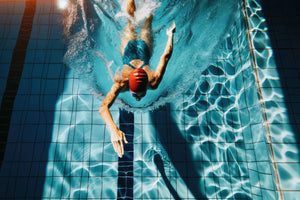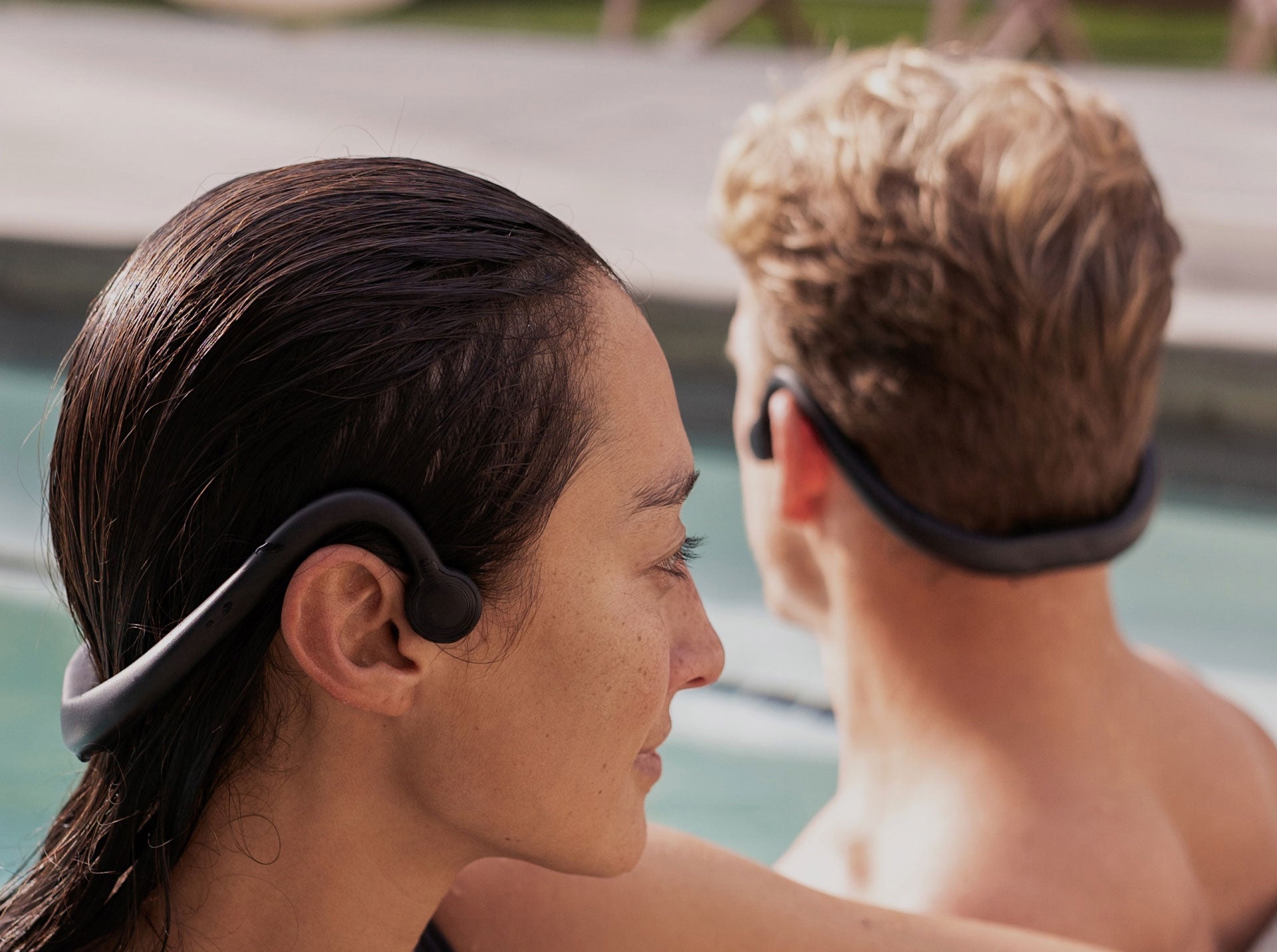How To Start Lap Swimming
Swimming is a fantastic full-body workout that offers both physical and mental health benefits. In recent years, swimming has surged in popularity. If you want to improve your cardiovascular fitness, build strength and endurance, or just have some fun and stay active with a low-impact exercise, swimming might be the right choice.
For beginners, the thought of diving right in and swimming laps at the local pool may be intimidating. In this article, we’ll explore the ins and outs of lap swimming and help you quell any anxieties about making the most of this rewarding activity.
What Are the Benefits of Lap Swimming?
Before exploring the practical aspects of how to swim laps, let’s take a moment to appreciate the health benefits of swimming.
Low-Impact Exercise
Swimming is a low-impact exercise that puts minimal stress on the joints. This makes it the perfect option for people who experience joint issues, those recovering from injuries, or older folks who can no longer perform high-impact exercises.
Cardiovascular Fitness
Lap swimming is an excellent cardiovascular exercise that can improve your heart health exponentially. It also increases your lung capacity and VO2 max, which boosts overall endurance.
Full-Body Workout
Few other exercises can offer the fat-burning benefits of swimming. Lap swimming engages your entire body, providing a comprehensive workout for arms, legs, core, and back muscles. Getting toned while also doing cardio is a healthy win-win.
Stress Reduction
The rhythmic nature of swimming movements, the calming effects of being in the water, and the immersive nature of diving under the surface all help to promote relaxation. This makes swimming great for physical and mental health.
Versatility
Lap swimming is adaptable and can be tailored to suit various fitness levels. Adjusting intensity, duration, and stroke techniques to meet your specific needs is a breeze.
What Equipment Do I Need For Lap Swimming?
Before diving straight into the deep end, you’ll want to ensure you have everything you need for a comfortable and enjoyable experience. While everyone is different, here’s what we think you’ll need to get started.
Swimsuit
Invest in a well-fitting, athletic swimsuit designed for lap swimming. For women, a bikini set may not prep you for success; for men, baggy board shorts may not do the trick, either. Look for suits that are made from chlorine-resistant fabrics that provide a secure and comfortable fit.
Goggles
Goggles might seem optional, but they’re actually essential for protecting your eyes from chlorine and allowing you to see clearly underwater. Choose a pair with anti-fog technology and adjustable straps for the most comfortable experience.
Swim Cap
This addition may be optional if you don’t have much hair, but most people prefer to keep their locks under wraps, especially if they swim often. A quality swim cap will protect your hair and make you a little more hydrodynamic in the pool.
Kickboard and Pull Buoy
These training aids can be useful for beginners to isolate and focus on specific stroke techniques or muscle groups. If you’re unsure where to start, a good rule of thumb is that a kickboard is best for isolating and strengthening muscles in your legs.
Underwater Headphones
Music makes everything better. While swimming on its own is great, swimming with music in the background can give you the extra motivation you need. Put on your favorite motivational playlist and dive in.
Gym Membership
A gym membership will depend on your location and specific needs, but most people who want to start swimming laps will have to do so away from home.
The most common way to swim laps is to purchase a local gym membership. But maybe you have a public pool that will suffice, or you live on a lake and don’t need your lap mileage to be exact. This one is up to you.
What Can I Expect When I Swim Laps?
The first time at a pool can be intimidating. However, in most gyms and pools, there is general swimming etiquette that you can expect to experience when swimming laps.
Multiple Lanes With Different Purposes
At most pools, different lanes denote different swimming speeds. Part of the pool may also be sectioned off for family swims, with only a few lanes open for laps. Check your pool’s schedule to know what to expect and when to expect it. If you’re unsure, ask the lifeguard on duty.
Pick an Empty Lane First
Sharing lanes is allowed in a lap swimming setting! But first, you should scope things out and see how quickly other people swim. It‘s proper etiquette to choose an empty lane if one is available.
Always Enter From the End of the Pool
Many swimmers consider entering a lane from the side poor pool etiquette, so always make sure to enter from the end of the pool. If you have to share a lane, a great way to indicate your intentions is to sit on the pool deck and dangle your feet. Not everyone will pause their swim, but since lane sharing is allowed, it’s okay to get in the water once they’ve passed you.
Tapping When Someone Wants To Pass
If you have to share a lane, it’s standard etiquette for your lane partner to tap you on the foot as you swim if they want to pass you. It may surprise you at first or feel weird to do it yourself, but it will become second nature with practice.
Pool-Specific Policies
Every pool has different policies; ask at the front desk to learn exactly what they are. Are swim caps required? What is the lap-sharing policy and pattern? Remember that asking questions is the best way to learn and nothing to be ashamed of. Everyone starts somewhere.
How To Develop a Swim Routine
Consistency is key when it comes to developing a swim routine. However, you don’t need to have all the aquatic know-how of a professional swim coach to get yourself started. Here are some tips to help you navigate this new journey:
Set Realistic Goals
Start with achievable goals, such as swimming a certain distance or for a certain amount of time. Then, gradually increase your targets as you become more confident and comfortable in the water.
Schedule Your Swims
Treat your lap swimming sessions like any other important event on your calendar. Research shows that people who plan their workouts in advance and write them down are more likely to follow through.
Warm Up and Cool Down
Like any other exercise, make sure you dedicate enough time to warming up and cooling down. Take a few minutes to stretch and get your body warm before swimming, and let your body cool down and return to the status quo at the end of your workout.
Track Your Progress
Keep a log of your swims, including distance, duration, and any other goals or challenges you encountered. Monitoring your progress will help you stay motivated and notice patterns in your behavior.
Use Social Media to Your Advantage
You can find swimming inspiration by scrolling TikTok or looking through Instagram. Many accounts dedicated to swimming will share swim workouts on their pages, so it’s worth your time to parse them out. Just remember that when you’re starting out, you should stick to workouts deemed for beginners.
What Are Good Strokes for Beginner Swimmers?
To the naked eye, lap swimming may seem serene. However, learning proper stroke techniques is essential for becoming efficient in the water, preventing injury, and maximizing your workout. Here are the four main strokes you need to learn when starting lap swimming:
Freestyle
This stroke is also known as the front crawl. The freestyle stroke is the most common and efficient for lap swimming and is probably what you think of when you picture someone swimming laps. It involves alternating arm strokes and a flutter kick.
Backstroke
As the name suggests, a swimmer performs a backstroke facing up on their back. This stroke can be a great option for swimmers with shoulder or neck issues, as you don’t have to turn your head to come up for air.
Breaststroke
The breaststroke is characterized by symmetrical arm and leg motion, almost like a frog's. It is a slower, more relaxed stroke that can also be easier on the shoulders.
Butterfly
The butterfly stroke is considered the most challenging. It involves simultaneous overhead arm motions and a dolphin kick, where you keep both legs together. It’s a powerful stroke requiring strength and technique, so if you’re just getting started, you probably don’t want to start immediately with this one.
The Final Lap
Getting started with lap swimming may seem a bit daunting at first. Still, with the right preparation, gear, and mindset, it can become a rewarding new routine that enriches your mental and physical well-being. Embrace the challenge, celebrate your progress, and, most importantly, have fun in the water.
Sources:
U.S. Americans who did swimming 2023 | Statista
Simplify your workout with lap swimming | Harvard Health
Doing What We Mean to Do: Following Through with Fitness Goals | ACSM


